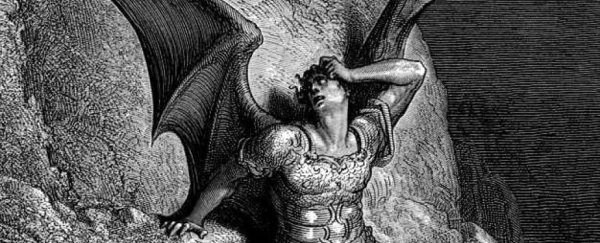More than 350 years after its first publication, you might think John Milton's epic Paradise Lost poem had given up all the secrets it had to give – but it turns out there are still discoveries to be made, concealed inside these thousands of lines of verse.
Undergraduate Miranda Phaal from Tufts University in Massachusetts has found a distinctive literary pattern that other Milton scholars have previously missed, and one which uncovers a hidden message inside the text.
What Phaal has found is an acrostic: a poetic device where the first letters of successive lines are used to spell out a word or phrase, usually to point out something of wider importance or to emphasise an underlying theme.
Classic poets like Dante and Virgil used the technique, and several are scattered throughout the text of Paradise Lost. The one that Phaal has spotted, however, hasn't been noticed before.
It's in Book 9 of the poem, at a point when Eve is arguing with Adam – the lines read FFAALL ("fall" twice) from top to bottom, with another FALL spelled out from the bottom of the passage upwards.
From his surmise prov'd false, find peace within,
Favor from Heav'n, our witness from th'event.
And what is Faith, Love, Virtue unassay'd
Alone, without exterior help sustain'd?
Let us not then suspect our happy State
Left so imperfect by the Maker wise
As not secure to single or combin'd.
Frail is our happiness, if this be so
Phaal interprets this as representing the double fall of humankind (Adam and Eve) read downwards, interlinked with the third fall of Satan read upwards – showing perhaps how Satan tempted Adam and Eve, or how pride tempted all three of them.
"Ultimately, the acrostic distils the entire poem down to its essence: three contingent falls, two paradises lost," writes Phaal in her essay.
"Like many well‐known acrostics, it operates in counterpoint to the explicit text that couches it, foreshadowing that all is not as it seems," she notes.
It's not the first acrostic to be discovered long after the poem's publication – a now well-known SATAN acrostic wasn't found in the text until 1977.
That acrostic, like this new one, works as a way of warning the reader what is about to happen – that evil and evil intent lurks inside the apparently friendly serpent – and it shows how the best poetry can keep on surprising us centuries later.
"Like other significant acrostics, this one once seen exerts its force, and it offers a visual marker of the imminent Fall, in all its physical and moral dimensions," writes John Fyler, English Literature professor at Tuft's and one of Phaal's tutors.
The research has been published in the Milton Quarterly.
